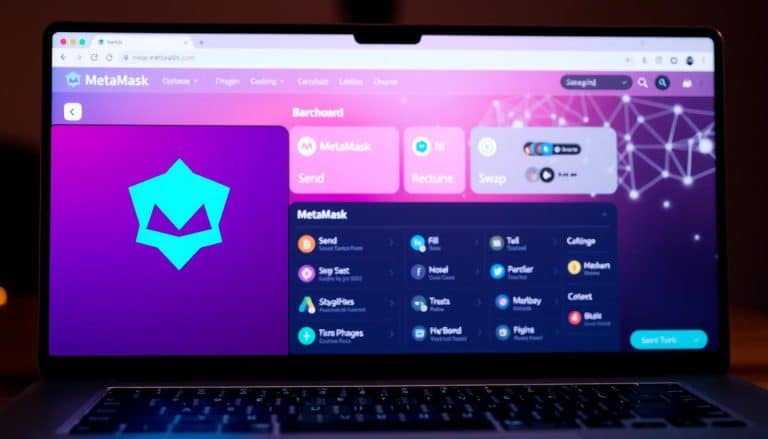Xrp Digital Ecosystem
XRP is a digital asset that has been gaining traction in the financial world due to its potential for making transactions faster and easier. It has become an integral part of the digital ecosystem, much like a bee buzzing around the hive of blockchain technology. As such, it is important to understand what XRP is, how it works, and why it has become so popular. This article will delve into the details of the XRP digital ecosystem to explain its features and advantages as well as discuss some of the regulatory challenges associated with its use.
Overview of XRP
XRP is a distributed open source protocol and digital asset that allows for fast, inexpensive, and reliable financial transactions across the globe. It was created to facilitate secure payments between two parties without having to go through a third-party intermediary like banks or other payment providers. XRP also provides access to decentralized exchanges, allowing users to buy and sell digital assets with each other in an automated way. Additionally, interoperability standards have been set by XRP to ensure data consistency between different blockchain networks when transferring funds. This makes it easier for users to send money from one currency or country to another without having to worry about different exchange rates or fees associated with sending overseas payments. Overall, the XRP ecosystem provides a secure platform for individuals and businesses alike that want access to global financial markets quickly and reliably at lower costs than traditional banking systems. These features make XRP an attractive option for those looking for alternative solutions in finance and cryptocurrency markets. As such, the XRP digital ecosystem has grown steadily over time as more people become aware of its potential benefits.
The XRP Digital Ecosystem
RippleNet, xRapid and xCurrent are components of the XRP digital ecosystem. RippleNet is a global payments network that enables users to transfer money quickly, securely and at low cost. The xRapid platform uses XRP as a bridge currency between two different currencies, allowing financial institutions to reduce liquidity costs while facilitating cross-border payments. Lastly, xCurrent is used for messaging and tracking payments in real time, allowing banks to settle transactions faster. Together these three components form the core of the XRP digital ecosystem.
RippleNet
RippleNet is a payment network that utilizes distributed ledger technology to facilitate global financial transactions. It includes several products, such as xRapid, xCurrent, and xVia. Each of these products are designed to provide fast, secure, and low-cost payments for customers:
- xRapid enables real-time settlement of cross-border payments by utilizing XRP cryptocurrency as a bridge asset between two currencies. This provides customers with cost savings on international transactions compared to traditional banking methods.
- xCurrent allows banks and other financial institutions to process cross-border payments in real-time without the need for pre-funding or manual reconciliation. The system also includes end-to-end tracking capabilities so that users can keep track of their funds throughout the transaction.
- xVia is a standardized interface which facilitates seamless connections between RippleNet members and enables them to easily send payments across borders with no additional integration needed. It also provides details about the sender and receiver of each transaction in order to ensure transparency and compliance with regulations.
The combination of these three products makes RippleNet an efficient platform for facilitating secure global payments with minimal costs associated with them. As such, it has become increasingly popular among banks and other financial institutions looking for ways to improve their cross border payment services while reducing operational costs. The efficiency and cost savings provided by RippleNet make it an attractive option for those seeking reliable international payment solutions.
xRapid
xRapid provides a fast, secure, and cost-effective way to transfer funds across borders by utilizing the XRP cryptocurrency as a bridge asset. It is an integral part of the RippleNet financial network, allowing for banks and other financial institutions to access real-time liquidity when sending cross-border payments. xRapid leverages technology advances such as distributed ledger technology (DLT) to reduce risks associated with fraud, theft and money laundering. By leveraging XRP’s speed and immutability, transactions are processed in seconds rather than days at a much lower cost. This brings considerable security implications for both sender and receiver of the payment due to its decentralised nature which removes the reliance on any one party or entity. The use of xRapid thus ensures greater transparency as well as faster settlement times which results in enhanced customer satisfaction in terms of cost savings and convenience. With these advantages in mind, it is clear that xRapid has potential to revolutionise global payments systems by providing a more efficient alternative for international transfers.
The next topic within this digital ecosystem is ‘xCurrent’, which seeks to offer similar benefits but without using cryptocurrencies such as XRP as an intermediary asset.
xCurrent
xCurrent is the newest addition to RippleNet’s suite of payment solutions, designed to facilitate secure and cost-effective cross-border payments without relying on a digital intermediary asset. Ripple’s impact on the XRP marketplace has been profound:
- xCurrent allows for real-time settlement across borders with end-to-end tracking of funds at all times.
- It offers a bi-directional messaging capability that enables clients to communicate securely in both directions – allowing them to exchange information such as invoices and credit histories quickly and easily.
- Its open source architecture ensures that no single entity can control the network or its data, making it highly secure and reliable for users around the world.
- Through its use of distributed ledger technology (DLT), xCurrent eliminates counterparty risk while providing near instantaneous settlement times compared to traditional methods like wire transfers or checks which can take days or even weeks to process.
Ripple’s suite of products provides an efficient bridge between traditional financial institutions and the rapidly evolving cryptocurrency market, helping create an ecosystem in which faster, more secure transactions are possible without sacrificing user privacy or introducing unnecessary fees into the equation. Moving forward, this will have a major impact on how global businesses interact with one another, enabling new levels of economic activity and commerce worldwide – paving the way for a more connected future.
How XRP is Used
XRP is used as a bridge currency in RippleNet, allowing for fast and direct transfers between different currencies. XRP eliminates the need for multiple intermediaries to complete international payments, which improves the security of transactions by reducing potential points of failure. The use of XRP also helps to reduce scalability issues associated with traditional payment networks since no matter how large the transaction size or volume, it can be settled instantly on the ledger. Additionally, XRP can settle payments faster than other digital assets due to its higher throughput capacity and low latency time. This makes it an ideal choice for use in global payment systems that require quick settlement times. With these benefits, XRP has become increasingly popular among businesses looking to simplify their international payments processes. As a result, RippleNet continues to grow both in terms of new users and transaction volumes as more companies adopt this innovative technology solution. Consequently, this contributes to a stronger digital ecosystem for XRP and further extends its reach into global markets.
Benefits of XRP
XRP is a digital asset that has numerous benefits, including low transaction fees, high liquidity, and fast transaction speeds. Low transaction fees make it an attractive option for individuals who are looking to transfer funds quickly and efficiently. High liquidity ensures that XRP can be converted into other assets with ease and speed, making it highly accessible in the market. Finally, XRP transactions take place almost instantly due to its advanced technology which eliminates delays associated with traditional banking methods. Therefore, XRP provides a great solution for those looking for a secure and cost-effective way to send or receive payments digitally.
Low Transaction Fees
The low transaction fees associated with XRP’s digital ecosystem make it a wise investment choice, as they are akin to a gentle breeze compared to the oppressive heat of traditional banking systems. XRP’s low costs scalability allows users to send money anywhere in the world for a fraction of what is typically charged by banks and other remittance services, making it an ideal choice for cost effective remittances. Moreover, its low transaction fees allow users to move large amounts of funds without incurring excessive costs, increasing their overall liquidity while keeping operational expenses at a minimum. This high liquidity makes XRP an attractive option for investors looking to capitalize on short-term opportunities or take advantage of market fluctuations.
High Liquidity
Given its low transaction fees, XRP offers high liquidity, allowing users to move large sums of money quickly and efficiently with minimal costs. The high liquidity nature of the currency also provides an additional advantage for traders in that it reduces the risk associated with changing exchange rates and eliminates potential losses due to low market liquidity. Additionally, XRP is highly volatile and can be traded rapidly which makes it suitable for scalability solutions. This means that users are able to make fast trades without having to worry about price fluctuations due to a lack of buyers or sellers in the market. Furthermore, XRP has a fast transaction speed which helps facilitate quick transfers between different exchanges or wallets, meaning that funds are delivered almost instantly at no extra cost.
Consequently, XRP’s combination of low transaction fees and high liquidity makes it an attractive option for investors who want to manage their finances more effectively while still maintaining control over their investments. As such, XRP is becoming increasingly popular as a digital payment solution among both retail and institutional traders alike. With this in mind, its fast transaction speeds make it well-suited for those seeking instant payments without incurring any additional costs or delays.
Fast Transaction Speeds
The high liquidity of XRP makes it attractive to users, but its fast transaction speed is what makes it a leader in the digital currency ecosystem. Transactions on the XRP ledger are settled almost instantaneously, meaning that users can complete transactions and receive their funds faster than with other digital currencies. This makes XRP an ideal choice for businesses and individuals who need to quickly process payments or exchange money across different currencies. The fast transaction speeds also mean that XRP offers interoperability benefits over other digital currencies, allowing users to move between different networks with ease. This further increases the versatility of XRP and allows for a much broader range of use cases than many other cryptocurrencies. As such, these fast settlement times make XRP an attractive option for those seeking quick turnaround times in their financial transactions. With these advantages in mind, it is no wonder why adoption of XRP is on the rise around the world.
Adoption of XRP
Adoption of XRP has seen an upsurge in recent years, creating a digital payments ecosystem that is more robust and efficient than ever before. Its increasing popularity is due to its ability to facilitate fast and secure transactions with minimal fees, allowing for greater efficiency in the transfer of funds between parties. Furthermore, the technology underlying XRP can enable faster processing speed than traditional payment networks such as credit cards, providing users with instant global liquidity. However, there are still security concerns and trust issues associated with XRP given its decentralized nature. This has caused some hesitation among potential adopters of the currency, despite its many advantages over other payment solutions. Nonetheless, as more people become aware of the benefits offered by XRP it is likely that its adoption will continue to grow. Moving forward however, it is important for developers to address any security risks posed by XRP in order to ensure wider adoption and further development of the digital ecosystem built around it.
Challenges Facing XRP
Despite its many advantages, XRP still faces a number of challenges that could impede its widespread adoption; chief among these are security concerns and trust issues due to its decentralized nature, casting an ominous shadow over the currency’s future. These include:
- Volatility risk: The price of XRP can be highly volatile, making it difficult for investors to accurately predict its value in the market.
- Scalability issues: The network is currently unable to handle large transaction volumes which can slow down the process of sending and receiving payments.
- Security concerns: While XRP is secured by a distributed ledger technology, it is vulnerable to hacking attempts from malicious actors.
- Trust issues: Its decentralized nature makes it difficult for users to trust the system as there is no central authority overseeing transactions and validating them.
- Regulatory frameworks: As governments around the world consider introducing regulations on cryptocurrencies, this could have a significant impact on XRP’s success. This lack of regulatory clarity adds another layer of uncertainty when considering investing in XRP and other digital assets. All these factors together create an uncertain environment that may hinder the growth and adoption of XRP as a payment method or digital asset in general. Consequently, it becomes increasingly important for developers and stakeholders involved with XRP to take steps towards mitigating these risks before they can realize their vision for a thriving digital ecosystem based on cryptography-enabled tokens like XRP.
Regulatory Frameworks
The development of XRP digital ecosystem has been hampered by a lack of clear regulatory guidance. As the technology behind cryptocurrencies and other blockchain-based applications continues to evolve, governments around the world are being forced to confront the issue of how to properly regulate the industry. In order for XRP to reach its full potential, it is essential that regulators create a balanced legal framework that allows innovators to develop while ensuring consumer protection and compliance with existing laws.
Smart contracts, one of the key features underlying most blockchain-based projects, have posed an especially difficult challenge for regulators as they attempt to craft new rules governing their use. Smart contracts represent an entirely new way of creating legally enforceable agreements between parties without relying on traditional third party intermediaries such as banks or lawyers. By requiring developers to code terms into smart contracts that meet specific regulatory requirements, authorities can ensure that these digital assets remain compliant with existing laws. Additionally, in order for XRP’s digital ecosystem to thrive, it is vital that authorities also keep up with rapid advances in technology so as not to stifle innovation or dampen user confidence due to unclear regulations and lack of oversight.
Frequently Asked Questions
Is XRP widely accepted as a form of payment?
XRP is becoming increasingly accepted as a payment option due to its cost effectiveness and fast transaction speed. It has gained traction among consumers looking for reliable, secure digital payment solutions. XRP’s growing acceptance as a form of payment makes it an attractive choice for businesses and individuals alike.
How secure is the XRP digital ecosystem?
Is it possible to trust the security of a digital ecosystem? With cryptographic safeguards and decentralized networks, the answer is an unequivocal yes. Such systems are designed with comprehensive security measures in place to protect data and transactions from malicious actors. As such, the XRP digital ecosystem can be trusted for its secure nature.
What are the long-term implications of the XRP digital ecosystem?
The scalability of XRP and the blockchain benefits it offers have long-term implications for the financial industry. It has the capacity to streamline transactions, increase accuracy, reduce costs and improve overall security.
How do I get started using XRP?
Sway your audience with an emotive introduction, then get to the facts: To begin using XRP, one must consider their buying options such as exchanges or brokers. Additionally, it is important to familiarize oneself with trading strategies that will help make the most of XRP investments. With a little research and knowledge, one can easily start utilizing XRP.
What are the risks associated with investing in XRP?
Investing in XRP comes with risks, such as regulatory uncertainty and liquidity issues. Investors should thoroughly assess the potential implications of changes to regulations or liquidity levels that may impact their holdings.







 Bitcoin
Bitcoin  Ethereum
Ethereum  Tether
Tether  XRP
XRP  USDC
USDC  Wrapped SOL
Wrapped SOL  TRON
TRON  Lido Staked Ether
Lido Staked Ether  Dogecoin
Dogecoin  Figure Heloc
Figure Heloc  Cardano
Cardano  WhiteBIT Coin
WhiteBIT Coin  Bitcoin Cash
Bitcoin Cash  Wrapped stETH
Wrapped stETH  Wrapped Bitcoin
Wrapped Bitcoin  USDS
USDS  Wrapped eETH
Wrapped eETH  Binance Bridged USDT (BNB Smart Chain)
Binance Bridged USDT (BNB Smart Chain)  Chainlink
Chainlink  LEO Token
LEO Token  Zcash
Zcash  Monero
Monero  WETH
WETH  Stellar
Stellar  Coinbase Wrapped BTC
Coinbase Wrapped BTC  Ethena USDe
Ethena USDe  Hyperliquid
Hyperliquid  Litecoin
Litecoin  Canton
Canton  Avalanche
Avalanche  Sui
Sui  Hedera
Hedera  USDT0
USDT0  sUSDS
sUSDS  Dai
Dai  Shiba Inu
Shiba Inu  Toncoin
Toncoin  World Liberty Financial
World Liberty Financial  Uniswap
Uniswap  PayPal USD
PayPal USD  Cronos
Cronos  Ethena Staked USDe
Ethena Staked USDe  USD1
USD1  Mantle
Mantle  Polkadot
Polkadot  Rain
Rain  MemeCore
MemeCore  Bitget Token
Bitget Token